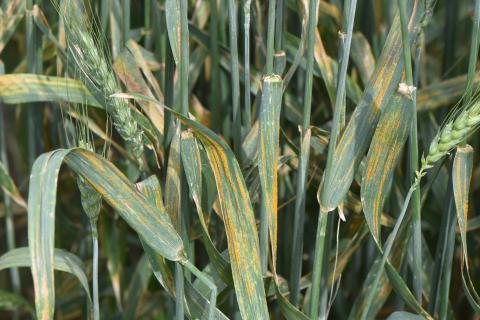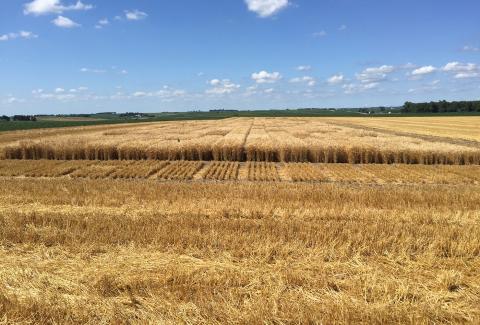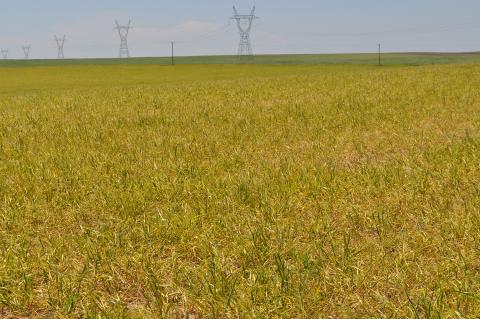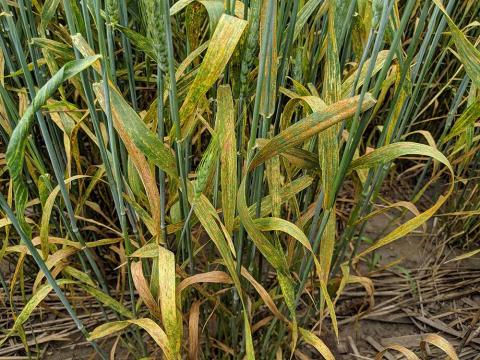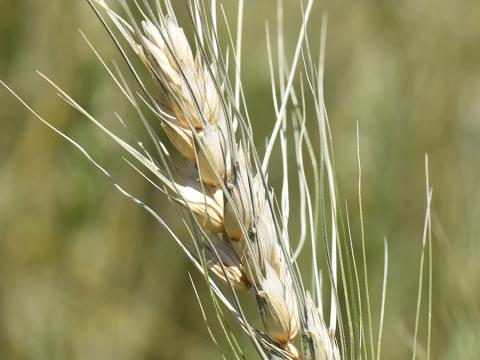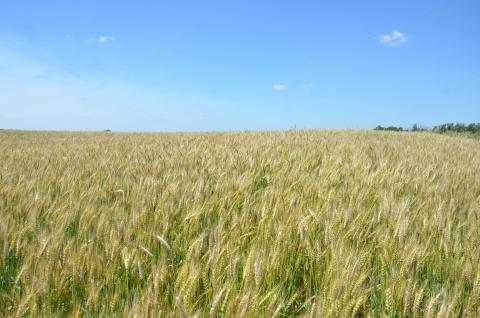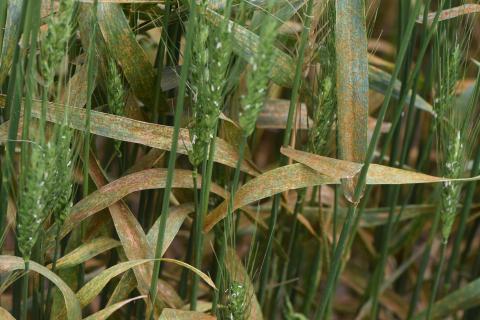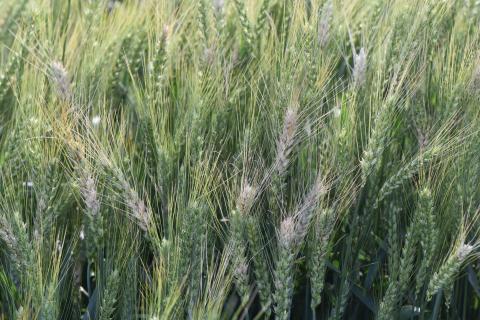Fall Wheat Disease Management Strategies to Reduce Losses in 2020
August 29, 2019
Six strategies that can be used this fall with winter wheat to minimize losses during next year’s growing season.
A Review of the 2018-19 Eastern Nebraska Winter Wheat Growing Season
August 15, 2019
Nebraska Extension educators review the wheat production season in eastern Nebraska and factors affecting it, from a rough start with cool, wet conditions to a good finish.
Reasons You Will Want to Control Volunteer Wheat and Weeds in Wheat Stubble After Harvest
June 19, 2024
Volunteer wheat can provide the summer "green bridge" for the disease wheat streak mosaic and other virus diseases, as well as soil water loss that could translate into a substantial decrease in yields the following year.
Wheat Disease Update
June 28, 2019
The latest field surveys in southeast, south central, and southwest Nebraska showed varying levels of wheat diseases that are favored by excessive moisture.
Why Did Fusarium Head Blight Develop in My Wheat Field after I Sprayed at Flowering?
June 28, 2019
Some wheat growers who treated for fusarium head blight at flowering (the optimum timing) with a triazole fungicide (the most effective fungicide class for this disease) are wondering why they aren't seeing the control they expected this year.
Strategies for Handling Wheat Grain Affected by Fusarium Head Blight
June 25, 2019
Excessively wet field conditions are contributing to the development of Fusarium head blight (scab) in some wheat fields. The disease is characterized by premature whitening or bleaching of wheat heads. As scabby grain contains a mycotoxin, it requires special harvest and separation procedures, as outlined here.
Moisture Continues to Favor Development of Wheat Diseases
June 21, 2019
Surveys conducted June 16-20 in all wheat growing regions in the state showed diseases were increasing due to favorable wet conditions. There was a sharp contrast between the southeast where diseases were conspicuous and the northern Panhandle where fields looked lush green.
Wheat Disease Update: Fusarium Head Blight
June 14, 2019
As weather conditions continue to favor the development and progression of wheat diseases, Fusarium head blight has increased from trace to moderate to high levels this week.

